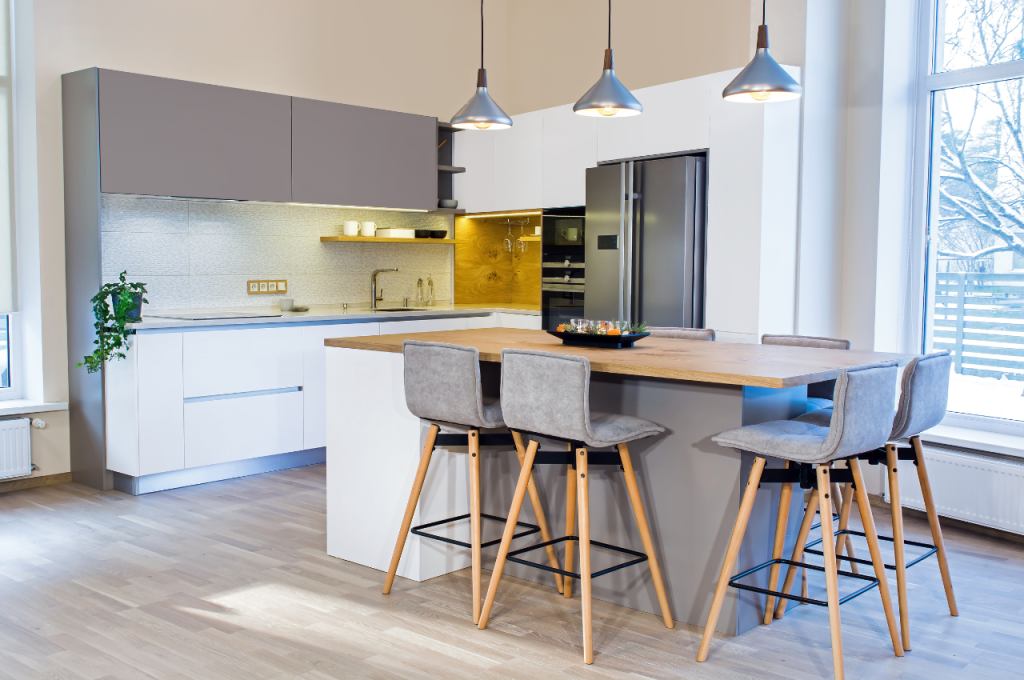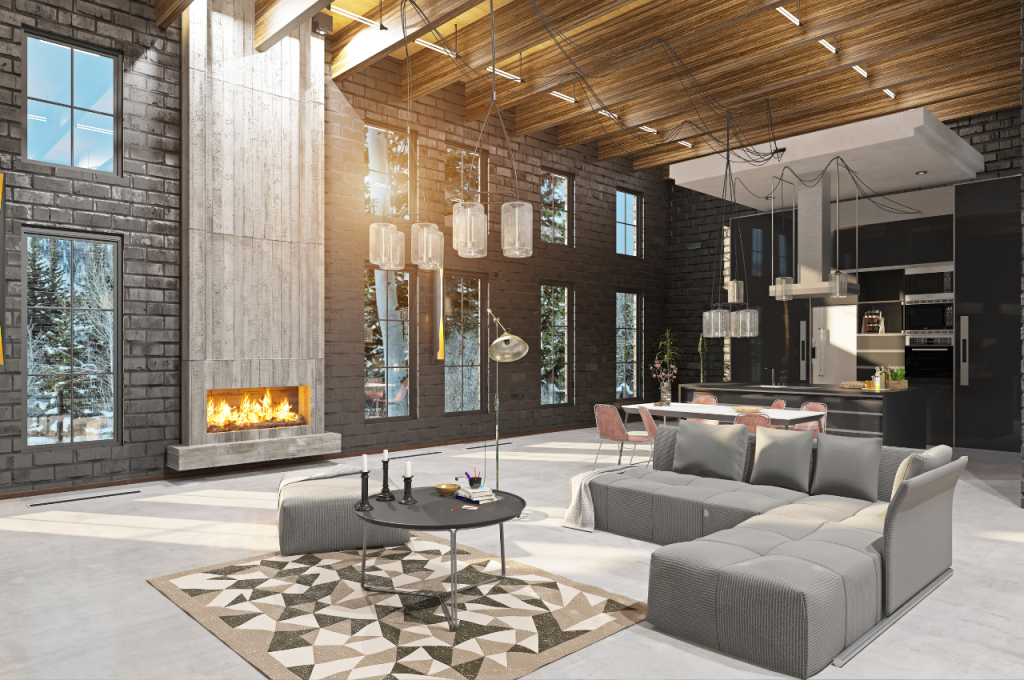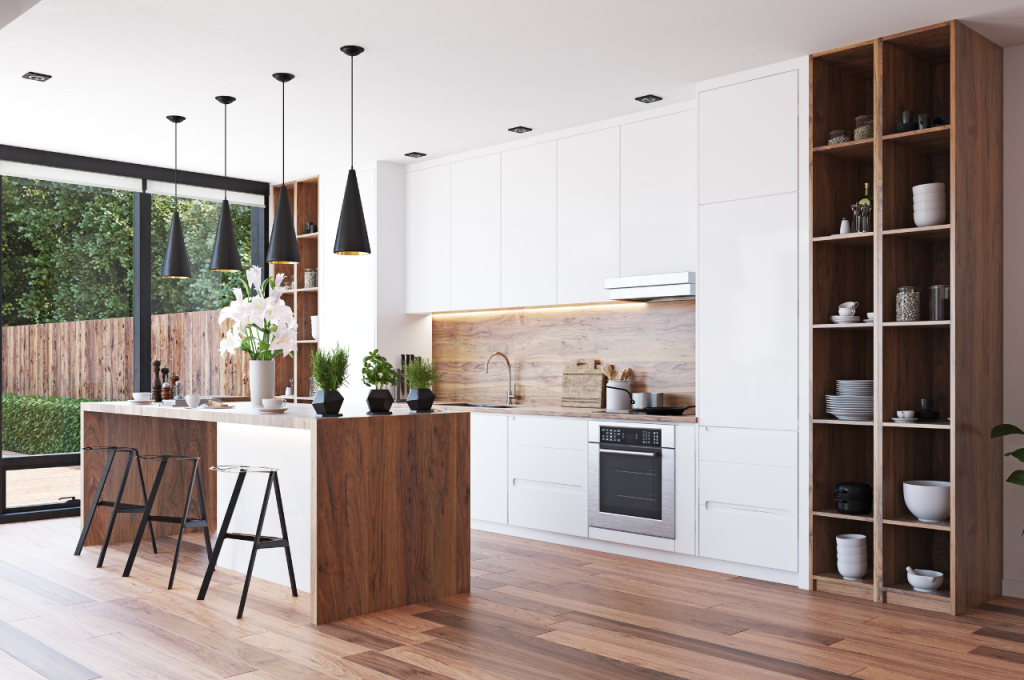Enhance your new house interior design by incorporating your style and functionality into the space. Customizing the design elements to reflect your lifestyle and preferences will create a unique and welcoming environment for you and your family.
When designing the interior of your new house, consider factors such as color schemes, furniture layout, lighting, and decor accessories. By choosing a cohesive design theme and focusing on both aesthetics and practicality, you can create a space that is not only visually appealing but also functional and comfortable.
Whether you prefer a modern, minimalist look or a cozy, traditional style, the key is to make your new house feel like a reflection of your personality and taste.
The Importance of Interior Design
Creating a visually appealing space makes a huge impact on how one feels in a home. Interior design plays a crucial role in shaping the way we experience and interact with our surroundings.

Creating A Pleasant Environment
Uses colors and furniture to evoke feelings of calmness and coziness. Organized layouts help create an inviting atmosphere. Strategic lighting can make a room feel bright and spacious.
Reflecting Your Personality
Allows individuals to express themselves through their living space. Customization reflects personal tastes and interests. Unique pieces showcase individuality and creativity.
Choosing The Right Color Palette
Choosing the right color palette for your new house interior design can set the tone for the entire space, creating a harmonious and inviting atmosphere. The color scheme you select will influence the ambiance, visual flow, and overall aesthetic of your home. Understanding the principles of color psychology and utilizing effective tips for selecting colors can help you achieve a cohesive and visually appealing interior design. Let’s explore the essentials of choosing the right color palette for your new home.
Understanding Color Psychology
Color psychology is the study of how colors affect perceptions and emotions. Different hues can evoke varying moods and feelings, influencing the overall ambiance of a room. Here are some common associations with colors:
- Red: Stimulating, energetic, and passionate.
- Blue: Calming, serene, and trustworthy.
- Yellow: Cheerful, optimistic, and uplifting.
- Green: Refreshing, tranquil, and natural.
- Purple: Luxurious, creative, and regal.
- Neutral colors (such as beige, gray, and white): Versatile, timeless, and sophisticated.
Tips for Selecting Colors
When choosing a color palette for your new home, consider the following tips:
- Consider the function of each room: The purpose of the space should influence your color choices. For instance, serene and calming colors are ideal for bedrooms, while vibrant and energetic hues can liven up living areas.
- Maintain visual cohesion: Create a sense of harmony by selecting colors that complement each other. Utilize the color wheel to identify complementary, analogous, or monochromatic color schemes.
- Factor in natural light: The amount of natural light in a room can impact how colors appear. Test paint swatches in multiple areas of the room to observe how they interact with light throughout the day.
- Balance bold and neutral tones: Introduce pops of color through accessories while maintaining a neutral base for a balanced and versatile color palette.
Incorporating Functional and Stylish Furniture
Discover the perfect blend of functionality and style for your new house’s interior design. Incorporate furniture that not only serves a purpose but also enhances the overall aesthetic of your space. Choose pieces that are both visually appealing and practical, creating a harmonious and stylish living environment.
Optimizing Space
When it comes to designing the interior of a new house, optimizing space is a crucial aspect. It is essential to make the most of every square foot available, especially in smaller homes or apartments. By incorporating functional and stylish furniture, you can create an organized and visually appealing living space.
One effective way to optimize space is by choosing furniture pieces that serve multiple purposes. For example, a sofa with storage underneath or a coffee table that doubles as a workspace can help maximize functionality in a limited area. Additionally, consider using floating shelves on walls to display books and decorative items without taking up valuable floor space.
Creating an open floor plan is another technique that helps in optimizing space. Removing unnecessary walls and barriers can enhance the flow of the area and create a sense of spaciousness. This provides flexibility in arranging furniture and allows natural light to penetrate the living space, making it appear larger.
Mixing Different Styles
When it comes to interior design, mixing different styles can add character and uniqueness to your home. Instead of sticking to one particular style, combining elements from various periods and genres can create an eclectic and visually interesting look.
To successfully mix styles, start by selecting a dominant style that forms the foundation of your interior design. For instance, you can start with a contemporary or mid-century modern style as the base and then incorporate elements of traditional, industrial, or bohemian styles to add depth and personality.
Incorporate pieces of furniture with distinct styles, but make sure they complement each other in terms of color, scale, and overall aesthetic. Balance is key to achieving a harmonious look. You can achieve this by using a neutral color palette as a backdrop and adding pops of color and pattern through accent pieces or accessories.
Remember, the aim is to create a cohesive yet visually dynamic space. Mixing different styles adds visual interest and creates a personalized space that reflects your unique taste and personality.
Enhancing Lighting and Ambiance
The right lighting can transform the atmosphere of a house, creating a warm and inviting space. Whether you’re looking for ways to utilize natural light or add artificial lighting, there are various techniques and strategies to enhance the lighting and ambiance of your new house’s interior design.
Utilizing Natural Light
One of the most effective and economical ways to enhance lighting in your new house interior design is by utilizing natural light. Natural light not only illuminates your space but also creates a sense of openness and freshness. Here are some tips for harnessing the power of natural light:
- Position your furniture in a way that maximizes exposure to natural light.
- Choose light-colored or sheer curtains that allow sunlight to filter through.
- Place mirrors strategically to reflect light and make the space appear brighter.
- Keep windows clean to ensure maximum light enters the room.
Adding Artificial Lighting
While natural light is essential, there will be times when you need to rely on artificial lighting to create the perfect ambiance in your new house interior design. Here are some ideas for adding artificial lighting:
- Consider installing overhead pendant lights or chandeliers to make a statement and provide general illumination.
- Use task lighting such as desk lamps or under-cabinet lighting to provide focused light in specific areas for activities like reading or cooking.
- Add accent lighting with wall sconces or spotlights to highlight architectural features or artwork.
- Choose lighting fixtures with adjustable brightness levels to create the desired mood for different occasions.
By utilizing natural light and incorporating artificial lighting strategically, you can enhance the lighting and ambiance of your new house’s interior design, creating a space that is both functional and aesthetically pleasing.
Innovative Storage Solutions
When designing a new house interior, innovative storage solutions are key to keeping a space organized and clutter-free. From saving floor space to creating a more functional living environment, clever storage solutions can transform a room’s aesthetic while maximizing its utility.

Utilizing Vertical Space
Vertical spaces, such as walls and corners, often go underutilized in house interiors. By incorporating wall-mounted shelves, hooks, and racks, it’s possible to free up valuable floor space while maintaining an organized and visually appealing environment.
Multi-functional Furniture
In a modern home, the use of multi-functional furniture can greatly contribute to efficient storage solutions. Pieces like ottoman storage, sofas with built-in drawers, and expandable dining tables provide both comfort and additional storage options in any living space.
Adding Personal Touches and Decor
Transform your new house with unique personal touches and captivating decor to create a cozy and inviting interior design. Incorporate personalized elements like family photos, bespoke artwork, and stylish accessories to infuse warmth and character into your living space. Embrace creativity to make your new home truly feel like your own.
Adding Personal Touches and Decor to your new house interior design can elevate the entire space and make it truly feel like home. Let’s explore some creative ways to infuse your personality and style into your living environment.
Showcasing Memories
- Displaying photographs in gallery wall arrangements.
- Using shadow boxes for special mementos.
- Customizing throw pillows with personalized quotes.
Incorporating Art and Plants
- Hang artwork that speaks to your taste and passions.
- Add indoor plants for a touch of nature and fresh air.
- Consider a vertical garden for a unique and stylish look.
Creating Inviting Social Spaces
Enhancing your new house’s interior design involves meticulously planning social spaces where you can entertain and connect with your loved ones. By focusing on creating inviting areas, you can elevate the overall ambiance of your home.
Designing Living Areas
Incorporate comfortable seating, warm color schemes, and functional layouts in your living areas to promote relaxation and conversation among guests.
Setting Up Entertainment Zones
Create dedicated spaces for entertainment such as a home theater, game room, or a cozy reading nook to provide diverse options for socializing and enjoyment.
Updating Flooring and Textiles
Updating the flooring and textiles in your new house can completely transform the overall look and feel of your space. Whether you are aiming for a modern and sleek design or a cozy and welcoming atmosphere, choosing the right flooring materials and textiles is essential. In this section, we will explore the importance of choosing durable materials, as well as the creative possibilities that come with mixing different textures for visual interest.
Choosing Durable Materials
When it comes to new house interior design, durability is key when selecting flooring materials. You want your floors to withstand daily wear and tear while still looking stylish and elegant. Opting for materials like hardwood, laminate, or ceramic tiles can provide you with both practicality and aesthetic appeal. These materials are known for their strength, longevity, and easy maintenance, making them perfect for high-traffic areas such as the living room, kitchen, or hallway.
Here are some examples of durable flooring materials:
- Hardwood: Known for its timeless beauty and durability, hardwood flooring adds warmth and elegance to any room.
- Laminate: An affordable alternative to hardwood, laminate flooring offers high durability, as well as a wide range of styles and colors.
- Ceramic tiles: Ideal for areas prone to spills and moisture, ceramic tiles are not only durable but also versatile in terms of design options.
By choosing durable materials, you can ensure that your new house flooring will remain beautiful and functional for years to come.
Mixing Textures for Visual Interest
In addition to selecting durable flooring materials, mixing different textures can add a unique touch to your new house’s interior design. Playing with textures can create visual interest, making your space feel more dynamic and inviting. Here are some tips to consider when mixing textures:

- Combine smooth and rough textures to create contrast. For example, pair a plush velvet sofa with a rustic wooden coffee table.
- Experiment with different fabric materials such as linen, leather, or faux fur to add variety and depth to your soft furnishings.
- Integrate textured accent pieces, like a shaggy area rug or a woven wall hanging, to bring tactile elements into your space.
Through strategic blending of textures, you can design a visually captivating environment that reflects your style and enhances the overall ambiance of your new house.
Conclusion
Innovative interior design can transform your house into a cozy and inviting sanctuary. By combining modern aesthetics with personal touches, you can create a space that reflects your style and personality. With the right design choices, you can make your house feel like a home.
Embrace design trends and let your creativity shine through in every room. Start your interior design journey today and make your house the envy of your friends and neighbors.

